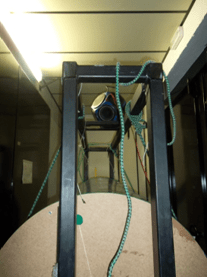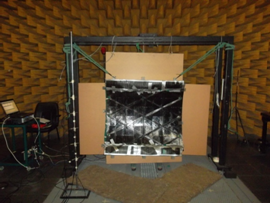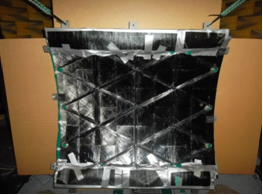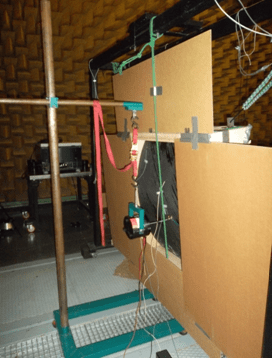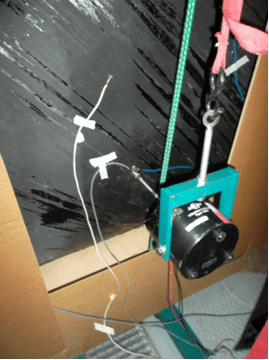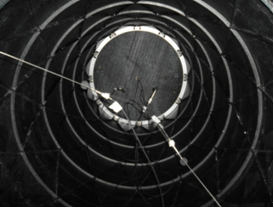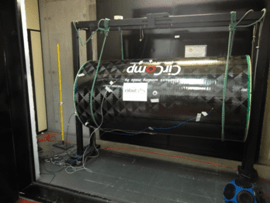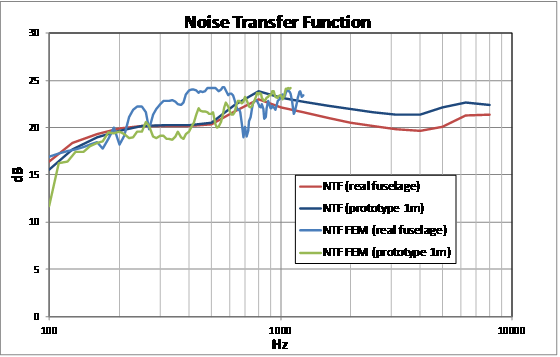As one of the last activities carried out within the WASIS FP7 Project, Cidaut performed the vibro-acoustic characterisation of two components, firstly one test panel and secondly the largest fuselage section (1m diameter prototype). In both cases the study covered low and high frequency ranges. The aim of this activity was to validate FEM/BEM models for low frequency range and SEA models for high frequency.
The panel dimensions correspond to the real scale size of the aircraft fuselage. The idea was to learn about the panel behaviour before addressing the 1:2 scale aircraft fuselage. Two test methods were used to identify the behaviour at low frequencies: inertance tests and experimental modal analysis. For the high frequencies the Transmission Loss and Radiation Factor were obtained. Trough these parameters coupling loss factors associated with each phenomenon can be derived.
To characterize the barrel, two different tests have been designed aiming to reproduce the noise field and acoustic loads the fuselage section would be exposed to in real conditions. In these tests the transmitted energies between different parts of the specimen are measured. Besides, the Transmission Loss and radiation factor were obtained.
To complete this task, vibro-acoustic models of filament winding structures were developed. The results of these models have been correlated with the results of structure characterization. Once the validation of both models was finished, a new model of a full scale filament winding fuselage was carried out.
All these models have helped characterize the vibro acoustic performance of Wasis Composite Prototypes, enabling the project Consortium to assess not only the mechanical performance, but also other factors such as the transmission loss and radiation factor.
